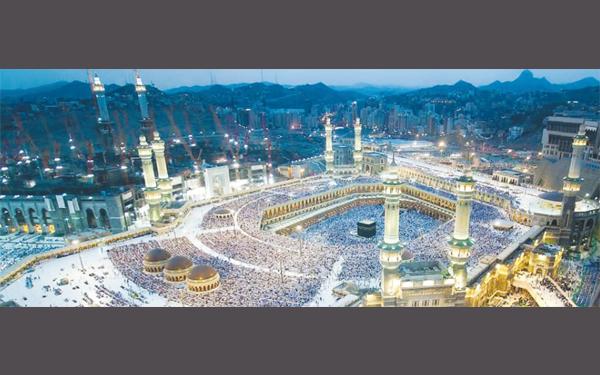
The Festival of Hajj will be celebrated soon globally. In this article Amal Abubakr, a Grade 10 student tells us about the Haj Pilgrimage.
With the Hajj week approaching, Muslims all around the world prepare for one of the most important journeys that they have to take.It is a journey that I as a Muslim would love to take one day.
Hajj is one of the pillars of Islam, meaning it is required for Muslims to take this journey at least once in their life. It refers to taking a pilgrimage to Mecca, Saudi Arabia where the Kaaba is situated in a cube-shaped stone building covered in black cloth which has decorated verses from the Quran. The Kaaba is located in the middle of the Masjid Al-Haram which is the most important mosque to Muslims.
 |
| The Kaaba |
Muslims spend five days completing acts of worship, while each day has a list of different events. So, what does this event entail for Muslims?
First, before you continue you have to enter a state of purity or Ihram, and one of the requirements is the dress code for both males and females. Males need to wear two white cloths, with one wrapped around the waist reaching below the knee and the other draped over the left shoulder and tied at the right side. Females don’t have a special dress but it has to cover everything but the hands and face.
On the first day, you arrive at the Masjid Al-Haram, and stare at the awe inspiring Kaaba. Here is where we perform what is called the Tawaf. It is when you walk seven times counter clockwise around the Kaaba.
After going around the Kaaba, people will pray at The Place of Abraham or Muqam Ibrahim. This is a stone with a footprint that we believe is one of our prophet’s, Prophet Ibrahim.
 |
|
Muqam Ibrahim (The House of Abraham)
|
After that we perform sa’ee, which implies running or walking seven times between the two mountains Safa and Marwa.
Finally, ending the first day, we go to a place called Mina also known the City of Tents. It is a section filled with sprawling tents, where we will spend the whole day performing prayers.
On the second day, we arrive at Arafat, a barren land where we stand, offering supplications, regret and apologise for our past sins and listen to speeches from the Islamic scholars.
The place where these scholars stand and preach is called Jabal al-Rahmah (The Mount of Mercy) from where Muhammad (peace be upon him), who is Islam’s most important prophet, is said to have delivered his last speech before passing away. This rite is so essential that our Hajj is considered incomplete if we do not spend the afternoon on Arafat. Then we go to another spot called Muzdallifah, which is between the lands of Arafat and Mina, we spend the night praying and sleep on the ground under a calm, open sky, and gather pebbles for the next day's ritual of the stoning of the Devil or as we call him Shaytan.
Now, on the third day in Mina, there are three pillars in rising size which are supposed to represent the Devil. Here we perform the ritual called the stoning of the Devil (Ramy al-Jamarat) by throwing seven stones at the largest pillar.
After we stone the Devil, we sacrifice an animal like a goat or a cow and give donations to the poor all around the world. Then we go back to Masjid Al-Haram and perform another Tawaf.
On the fourth and fifth day of Hajj, we repeat the stoning of the Devil. This time we throw stones at all three of the large pillars. Finally, on the last day, we do a last Tawaf known as the Farewell Tawaf’, and at the end kissing the Kaaba in gratitude to our God.
We go home with our souls cleansed and mind clear, knowing that we have just completed one of our duties.

